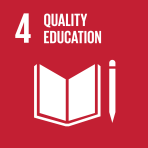-
Mass media exposure among urban youth in Nepal
- Source: Asia-Pacific Population Journal, Volume 18, Issue 1, Jan 2003, p. 5 - 28
-
- 16 Jan 2003
- Previous Article
- Table of Contents
- Next Article
Abstract
The mass media can serve to dis seminate in for mation about sexuality, health and other aspects of well-being to a variety of au diences, in cluding adolescents and young adults. They can improve knowledge and shape perceptions and attitudes about various subjects, and in fluence sexual and reproductive behaviour (Alan Guttmacher Institute, Henry J. Kaiser Family Foundation, and National Press Foundation, 1996; McCauley and Salter, 1995; Strasburger, 1989). The effectiveness of media campaigns as preventive strategies for major social and health problems among youth is also well documented (Hall, 1995; Sultz and others, 1989). The mass media, however, can also be a source of misinformation, misperception, and negative ideas and attitudes about reproductive health issues. They may even encourage risky be haviour, for example by promoting in effective means of contraception. Ideally, the media should provide accurate guidance about sexuality, reproductive health and responsible sexual behaviour, especially to young people, who are generally thought to be more susceptible than older adults to their influence. For these reasons, it is important to examine adolescents’ and young adults’ exposure to the mass media and the factors associated with that exposure.





